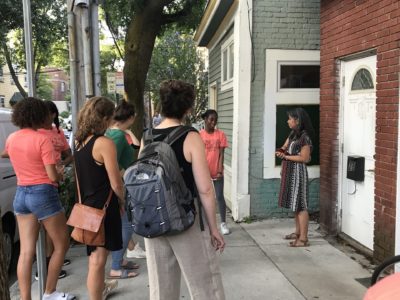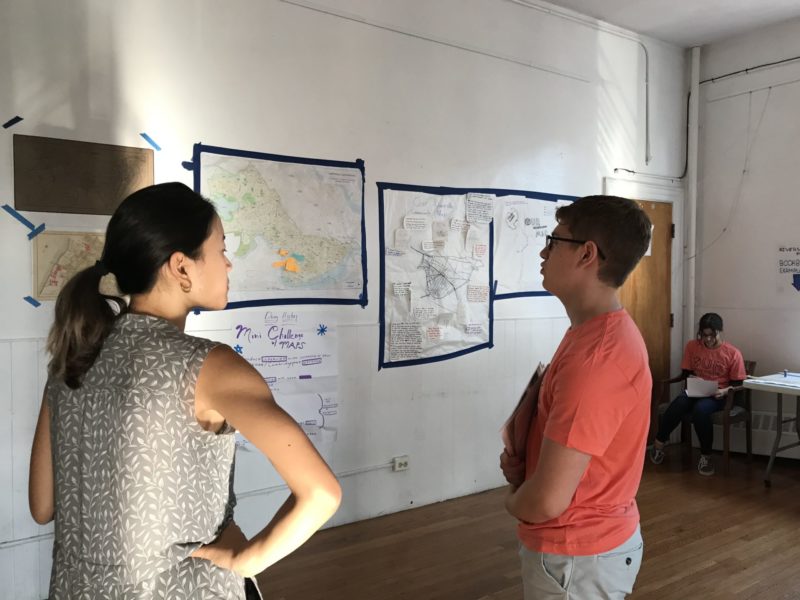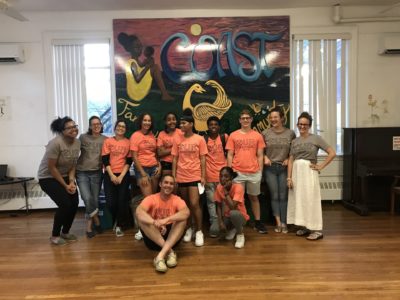Our Riverside: Engaging Teens in Archival Work and Public History
22 October 2019 – Annie Brown and Diana Lempel
local history, archives, gentrification, race, ethnicity, community archives, 2019 archives month series, youth
Editors’ Note: This is one in a series of posts about the intersection of archives and public history that will be published throughout October, or Archives Month in the United States. This series is edited by National Council on Public History (NCPH) board member Krista McCracken, History@Work affiliate editor Kristin O’Brassill-Kulfan, and NCPH The Public Historian co-editor/Digital Media Editor Nicole Belolan.
Cambridge, a college town just across the Charles River from Boston, has long been known for its ivy-clad walls. It has also been dubbed “The People’s Republic” for its diversity, funkiness, and left-leaning politics. In the past decade, gentrification hit Cambridge hard, replacing mom-and-pop stores with upscale local chains. These days, tourists descend en masse from chartered buses to snap selfies in front of the gates of Harvard Yard and MIT’s domed main building, but they rarely visit Cambridge’s historically black community in the Riverside neighborhood.

The final showcase for 2019 was a neighborhood walking tour. Photo credit: Our Riverside
As in many cities going through gentrification, much of Cambridge’s local history, particularly that of communities of color, is being lost and forgotten. To stem the tide of the loss of culture and history, Diana Lempel, a public historian who lives in the neighborhood, founded Our Riverside in 2015. Our Riverside is a community history and design program based out of the Cambridge Community Center (CCC). The program has two goals: first, to help the local community control their own historical narrative and, second, to develop historical understanding and communication skills for both youth and elders.
Riverside has always been a diverse, working-class neighborhood. In the early twentieth century, Italian, Greek, and Irish immigrants lived and worked along the river at the Riverside Printing Press or at nearby factories producing candy and the famous Fig Newton at Kennedy Steam Bakery. By the 1920s, a black community—known as The Coast—developed around the intersection of Howard Street and Western Avenue. West Indian immigrants, primarily from Barbados and Trinidad, joined African-Americans from southern states like Virginia and Georgia to create a vibrant community. Elders still live in the homes that their parents purchased in the 1940s and 1950s, but many people from the younger generations have been priced out.
There was no legal segregation in Cambridge, but we know from oral histories that these newcomers felt unwelcome at the local YMCA. In 1929, ministers from the four main black churches came together to found the Cambridge Community Center with the stated purpose “to provide a center for the recreational, educational, and social activity of the people of the community who desire to make wholesome use of their leisure time.” Over the past 90 years, the CCC has become the heart of the Coast community and therefore was a logical partner for a community-based history project.
Riverside and the CCC represent a significant part of Cambridge’s black history, which is underrepresented in both the permanent historical record (in city archives) and in existing scholarship and public narratives about the city. To help preserve this history, each summer Our Riverside hires a teaching team to work with a cohort of teen researchers who are funded by a city program called the Mayor’s Summer Youth Employment Program. The teaching team generates a provocative question to engage and guide the youth workers as they delve into the past while making connections to themselves and the present. Last year, our question was: “What does 1968 mean to us?”
One goal of our program is to show the youth what it means to “do history” using the inquiry process. This means helping youth ask questions and view history as a set of competing narratives. We hope to show youth that it makes a difference who gets to tell history and inspire them to see that their own stories matter.
Many of the youth are placed in the job without understanding the nature of the work. We see our role as helping each tap into their own passion. Each youth conducts individualized research, and we support them to find their own curiosity and their own voice. For us, the key is getting to know the youth as fully as possible. We model interviewing skills by interviewing the youth. We build relationships with them and help them figure out how their personal interests might turn into a research question. In the past, youth have looked into the flora of the neighborhood and researched the first video game developed at MIT in 1968.

Our Riverside youth worker speaking with a community member. Photo credit: Our Riverside
Part of the impetus of the program was the discovery that the CCC had its own archives going back to the founding of the organization in 1929. We guide the youth to interpret primary sources in this and other local archives. Soon to be accessioned by the Cambridge Public Library, the CCC archive is a jumble of manila folders containing everything from board meeting minutes and fundraising brochures to resumes of volunteers and descriptions of programs offered. Sifting through archives is like treasure hunting for historians.
For the youth researchers, however, the uncertainty is a challenge. Most of the youth have little background in historical research and scant knowledge of local history. It can be difficult (or impossible) to locate primary sources to answer a specific question. We use the CCC archive to get youth excited about the tangible stuff of history, but the youth prefer the digitized archives. Even these tools can be difficult to navigate. Each online resource is slightly different. Students find the open-ended nature of research difficult. They want clear, simple answers, and we need to push them to explore. We use individual conferencing to encourage the youth to stay motivated to keep searching and asking questions.
Two components of this project—the use of design thinking and oral history—help the youth maintain interest in what can be frustrating work. We see design thinking, with its focus on communicating ideas, as a natural complement to the historical thinking and research processes. Each week youth complete a mini-challenge which pushes them to design a product or a prototype. As they work, we strive to develop a culture of critique where youth learn to give each other supportive, critical feedback and then try out ideas (prototyping) to see what works. As a part of this process, we teach youth to look critically at choices made by other people—mapmakers, writers, artists, or architects—and evaluate whether they successfully met their goals. This way of thinking pushes youth to more carefully consider things they encounter in the real world and heightens awareness of their surroundings.
The youth conduct fieldwork by interviewing elders in the neighborhood. These oral histories deepen the record of the past in the neighborhood and help youth make observations about the present. One of the most transformative aspects of the project has been connecting youth to neighborhood elders. Just a few minutes chatting with Buzzy, a long-time custodian at the Center, reveals stories of a vibrant neighborhood in the 1950s, stories about watching movies at the drive-in the summer or ice skating on a flooded field in the winter. An interview with Ms. G, a board member at the Center, paints a picture of a community where kids could be sent to the corner store to pick up items for their parents, a time when shopkeepers would keep a tab for anyone who needed to wait for a paycheck to come in.
Our Riverside educators guide youth to share what they’ve learned in a public showcase. Each summer’s work is then archived in the public library. In past years, students have build models and written poetry and short stories; this year our final showcase took the form of a walking tour of the neighborhood (pictured above). We advertised by posting signs around the neighborhood but weren’t sure who we would get as an audience. The majority of people who turned out were not community elders but people relatively new to the neighborhood—”the gentrifiers.” They were patient and supportive with the youth workers and eager to learn about the neighborhood’s history. We were impressed with the poise and confidence of the youth as they shared their stories of the neighborhood. It seemed that the experience left both the tour guides and tour-takers feeling more connected to the community.

Our Riverside 2019. Photo credit: Our Riverside
One of the major take-aways from this work has been the importance of connecting youth and elders to maintain a community. When youth have a chance to interact with elders, they gain respect for their knowledge. At the same time, it is healthy for elders to stay connected and many enjoy reminiscing and talking about “the good old days.” These opportunities build a stronger sense of identity and connection to the neighborhood and transfer knowledge to the younger generation, giving us hope that the stories of our Riverside will not go untold.
~Annie Brown, a history educator and burgeoning public historian, is the Director of Our Riverside.
~Diana Lempel is a public historian and curator as well as Founder of Our Riverside.



